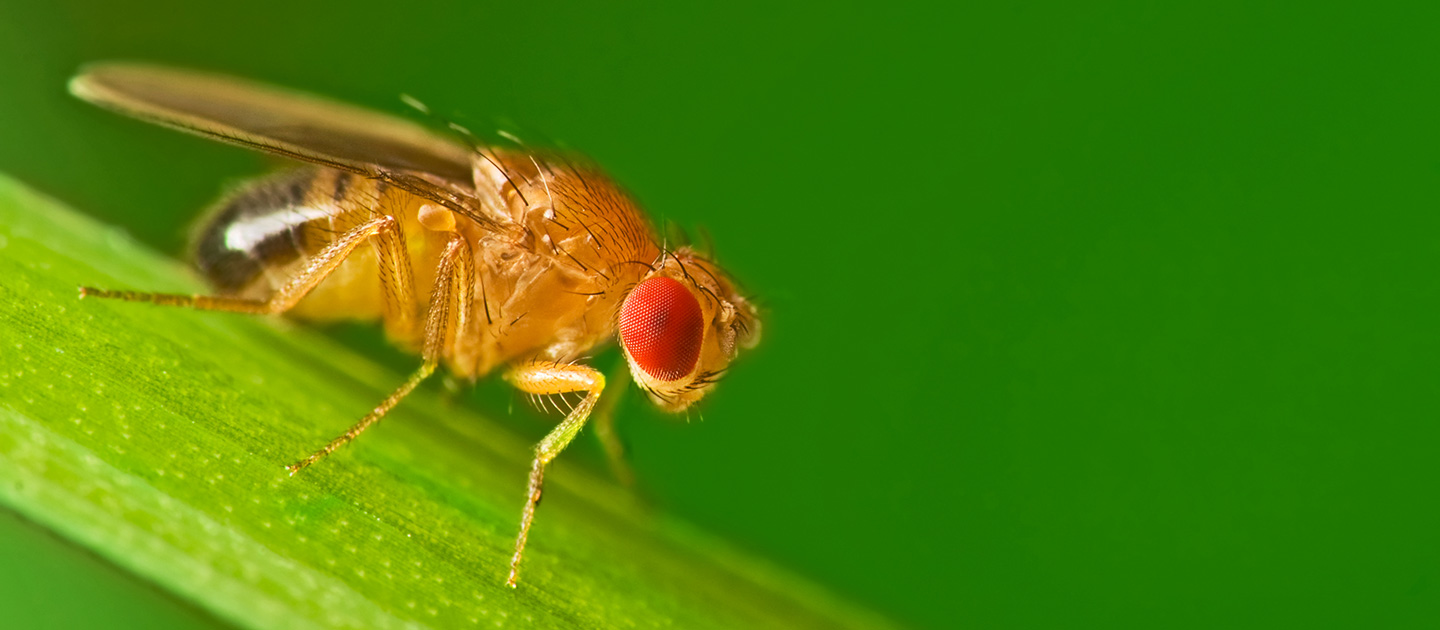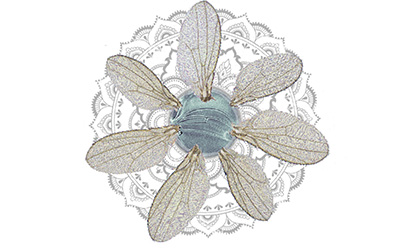How Mathematical and Statistical Concepts Help Understanding of Life's Mechanisms
New quantitative framework allowed researchers to see biological variation in populations

We’ve been taught that living systems are incredibly complex and diverse. However, there are clues that processes exist to tame these systems’ and sustain the robustness of life.
Using novel mathematical and statistical concepts, recent work from Northwestern University researchers took another step toward understanding this phenomenon.
“By using vast amounts of imaging data and our novel approach to quantitative phenotyping, we are able to for the first time actually see what the true biological variation in populations of fruit flies are,” said Madhav Mani, assistant professor of engineering sciences and applied mathematics at Northwestern Engineering and a corresponding author of the study.
Researchers from the McCormick School of Engineering and the Weinberg College of Arts and Sciences presented a new approach to morphological analysis of complex developmental structures. Studying the wing of a fruit fly, ensembles of images were processed to identify the boundary of the structure, mapped onto a disc while maintaining local geometry, and then aligned. This stack of aligned structures can then be statistically analyzed for pixel-by-pixel positional entropy, providing a high-dimensional feature space within which each image is embedded.

The paper “Global Constraints Within the Developmental Program of the Drosophila Wing” was published June 28 in the journal eLife. Richard Carthew, professor of molecular biosciences in the Weinberg College of Arts and Sciences, is also a collaborator on the study. Carthew directs and Mani is a member of Northwestern’s NSF-Simons Center for Quantitative Biology, which brings together mathematical scientists and developmental biologists to investigate the biology of animal development.
Hidden simplicities
The development of multicellular organisms is one of the most remarkable phenomena in the universe. Despite the incredible complexity of the molecular processes responsible for the development, humans look like other humans, and even more remarkably, twins look like each other. These qualitative observations suggest the existence of mechanisms, hidden simplicities, yet to be discovered.
More specifically, the researchers asked what are the features and mechanisms at play, and encoded in the genome, that confer such remarkable levels of robustness to the development of complex living systems? The study addresses the problem of how the seemingly complex developmental processes of metazoan forms can be so robust and tolerant to perturbation.

Statistical reasoning
To do that, the researchers proposed there are hidden simplicities that can be discovered in a data-driven manner using statistical reasoning. The study developed a framework that allows the developmental form to be analyzed quantitatively instead of using human-identified features or landmarks.
“While it might be sufficient to account for the relative positions of key features on a human face for the purpose of automated facial recognition, we certainly don’t believe that this artificially reduced view of the variation in human faces is sufficient to capture the true biological spectrum,” Mani said. “Our novel approach to measuring biological forms allows a more wholistic and unbiased, landmark-free, approach to phenotyping.”
“This method measures the shape and form of morphological structures in biology in a completely new way. It could potentially be applied not only to the wings of fruit flies but to complex three-dimensional structures such as the brain,” Carthew said. “It is exciting to think about the potentials for its application.”
Looking at the fruit-fly wing, different parts actually vary together and are not independent from each other. This dependence, or covariation, is generated by the process of development itself and sculpted by the wing’s evolutionary history and its physical constraints. Using mathematical concepts allows researchers to quantitatively study the shape and structure of the variation. Statistical analysis of the ensemble shows that most of the variation among individuals is accounted for in just a single mode, and that mode of variation is entirely missed by traditional phenotyping approaches.

Most strikingly, subtle genetic variations due to mutations or natural outbred variations project onto the top mode of this analysis, and significant perturbations due to temperature during development and/or dietary variation largely causes variations along the same top mode.
“Based on this the study, we concluded there are global, low-dimensional constraints within the development of the fly wing such that random, genetic, and environmental perturbations are largely forced to cause variations along a single mode of variation,” Mani said. “This mode is not obvious in traditional ways of analyzing morphological data. The finding that morphological variation among individuals follows along a low-dimensional but spatially non-intuitive mode, which brings a potentially a fundamental result.
“The finding that genetic and environmental variations also follow along the same global mode is a potentially deep statement about the relative simplicity underlying the vast apparent complexity of molecular mechanisms and more naively observed phenotypes associated with development, Mani added. “If the results of this work can be extended, it could represent an approach for a more general and simpler description of developmental processes and a route to better characterize the underlying mechanisms.”